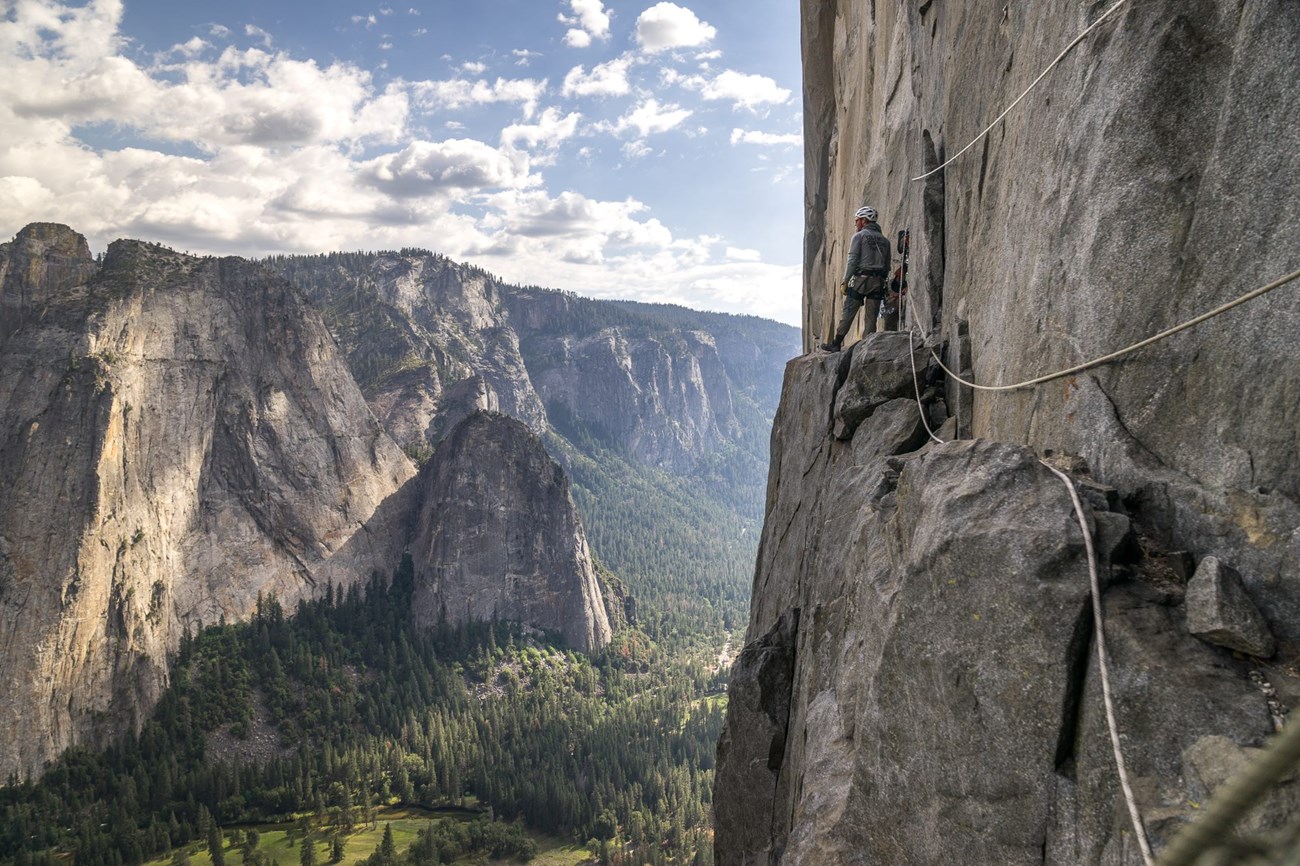
Yosemite is one of the world's greatest climbing areas. Climbers here can enjoy an endless variety of challenges--from the sustained crack climbs of the Merced River Canyon to pinching crystals on sun-drenched Tuolumne Meadows domes to multi-day aid climbs on the big walls of the Valley. Yosemite is not just a climber's playground, however: its walls and crags are an integral part of a larger ecosystem, protected as Wilderness, which was set aside for people to enjoy in a natural state for generations to come. As the number of climbers visiting the park has increased through the years, the impacts of climbing have become much more obvious. Some of those impacts include: soil compaction, erosion, and vegetation loss in parking areas, at the base of climbs, and on approach and descent trails, destruction of cliffside vegetation and lichen, disturbance of cliff-dwelling animals, litter, water pollution from improper human waste disposal, and the visual blight of chalk marks, pin scars, bolts, rappel slings, and fixed ropes. Many of these impacts can be eliminated or greatly reduced by following the minimum impact practices outlined in the conservation guidelines offered on this page. The impacts of your actions may seem insignificant, but when multiplied by the thousands of people who climb here every year they can have a significant, long lasting effect. Your help is needed to ensure that Yosemite remains a beautiful and healthy place for the future. What You Can Do
SafetyMore than 100 climbing accidents occur in Yosemite each year; of these, 15-25 parties require a rescue. Climbing in Yosemite has inherent risks and climbers assume complete responsibility for their own safety. The National Park Service does not maintain routes; loose rock and other hazards can exist on any route. Rescue is not a certainty. If you get into difficulties, be prepared to get yourself out of them. Know what to do in any emergency, including injuries, evacuations, unplanned bivouacs, or rapid changes in weather. Safety depends on having the right gear and the right attitude. Practice self-rescue techniques before you need them! Courtesy is an element of safety. Falling rock or gear is a serious hazard. Be careful when climbing above others. Do not create a dangerous situation by passing another party without their consent. Emergency InformationThe Yosemite Medical Clinic, located between Yosemite Village and The Ahwahnee, is equipped to handle climbing injuries. If you cannot get to the clinic on your own, call or text 911 for assistance. If you are injured or stranded while on a climb and cannot self-rescue, yell for help to obtain assistance. If you require a helicopter evacuation, do only and exactly what you are told by rescue personnel. Wilderness PermitsWilderness climbing permits are required for overnight big wall climbs. It is illegal to camp at the base of any wall in Yosemite Valley. If you must bivouac on the summit, you are required to follow all regulations:
Half Dome: Camping at the base of Half Dome is legal, but a wilderness permit is required. Camping on the summit of Half Dome is prohibited. 
Taylor Shaffer Conservation/Regulations
Yosemite Climber's CredoIn 1972, Yvon Chouinard and his colleagues advocated for their vision of a Clean Climbing Manifesto, where climbers share a responsibility to show restraint in the wilderness, to respect Indigenous rights, to protect wildlife, and to be a voice against threats to the places we climb. Fast forward to 2024, and a new call has gone out for Yosemite climbers to come together as a community and embrace a set of shared ethics and values; recognizing that how we as a community care for the areas in which we climb can have a direct impact on the level of protective regulation needed and the degree of access afforded to current and future generations of climbers.In collaboration with a diverse group of Yosemite climbers, NPS climbing rangers, and climbing advocacy groups, the Yosemite Climbing Association (YCA) has answered that call with the Yosemite Climber’s Credo. All climbers visiting Yosemite are encouraged to read and commit to the credo.
Climbing Instruction and Guide ServiceContact Yosemite Mountaineering School and Guide Service at 209/372-8344 for information on rates and schedules. |
Last updated: July 2, 2024
